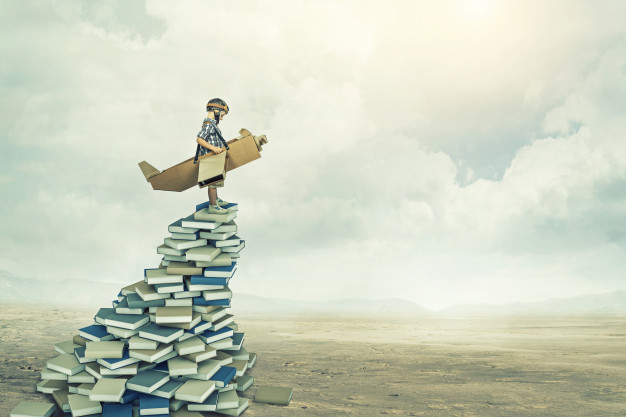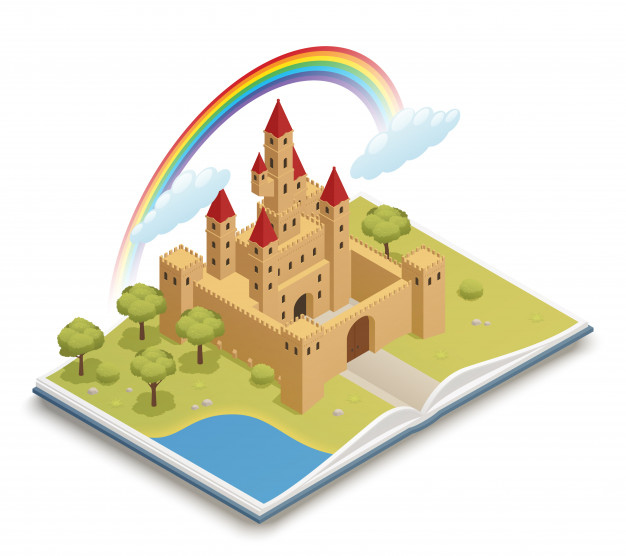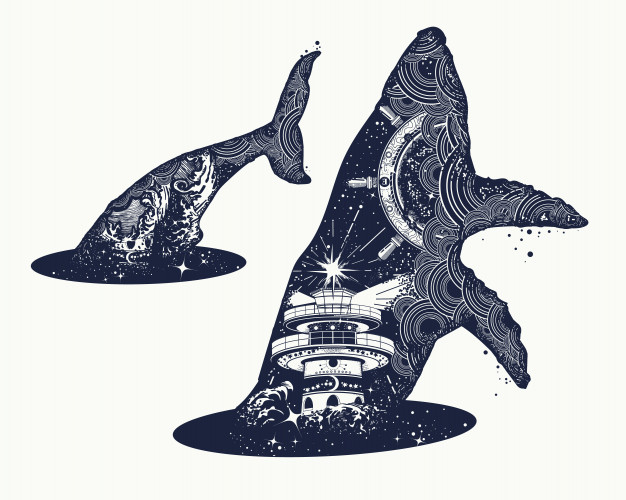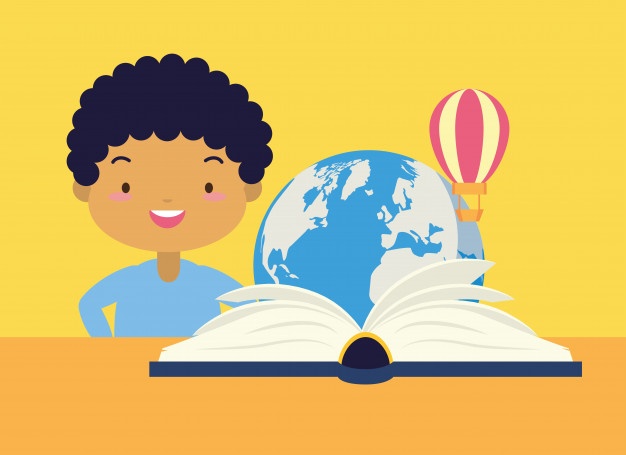One of the fantastical attributes of childhood fantasy, is the ability for a child to immerse in. . .the fantasy world. As children we were introduced to the wonders of storytelling. The tales of lands, that we desired to dream, of. Because it was in our dreams, where the fiction could become a reality. And, through our dreams, the worlds of fiction and reality become adventurous quilts of teaching children the power of making the invisible, part of the seen.
When cultivating creativity in the minds of young children (particularly in the Kindergarten and Pre-K stages), it is very important for educators to present books as if they have been pulled out from an imaginary world. What makes the imaginary truly obvious in the real world, is its ability to be unordinary. Something uncommon. Objects or ideas, which have been presented in a larger than life form. Tangible treasures encountered on a daily basis, presented in a different, unique, and creative format. Giving the illusion of transforming or altering space. Not to mention adding a 2-D or 3-D dimension, and euphoria, to the learning experience.

In the world of books, the ability to enlarge the literary world, heightens and elevates children’s understanding of being in that fictional world. One such example is when children (in the Pre-K and Kindergarten stages) are taught to see themselves as authors and creators of their own stories; all the while crafting the imagery to match. Yet, this particular method is not conducted in the traditional sense. Not in traditional methods of storytelling, story reading, and so forth. Rather, through visual imagery. That larger than life imagery, in fact. Our ability to imitate, while playing our role in, fiction. Experiencing fiction, creating in fiction, in order to learn in a fictional world. A fiction of time. Even if it is for a. . .moment.
This particular method is related to the larger than life presentation of books. Activities of large, cut out, construction papers of books, which allows children to craft their images, and create their titles, greatly contributes to this fictional world. The feeling of being in, on top of, or next to a large book (large enough to cradle, surround, or wrap around a small child) is what gives the feeling of an imaginary world. As if one has leaped into it, while having the ability to retrieve treasures found in the fictional world, back into the real one. One could even observe the method of using large, 2-D or 3-D models of books for students to write or illustrate the ideas for their story. Its the art of truly experiencing, and creating a model space of its being, while bringing a whole new educational vibe to the world of literacy. Through this method, children see literacy (the world of literacy, imagination, creative decorum, and so forth) as more than tangible sheets of paper-decorated with words to be imitated and echoed. On the contrary, literacy becomes an adventure; allowing Kindergarten and Pre-Kindergarten students to become co-creators in that adventure. Through that 3-D and larger than life effect, books are transformed into the world of the living.

One of the auspicious tasks of introducing the concept of author and illustrator to Kindergarten and Pre-Kindergarten students is the power of creativity. The power for students to become artists with fiction. Taking their individual and unique movement patterns to move through their observation and articulation of knowledge. How are children at this age group contributing to knowledge’s artistry? How do they see themselves in the painting? Furthermore, how does one view their own identity and ability to create when they immerse in a fictional reality, within classroom spacing?
Observing kindergarten children creating book titles, while crafting designs and pictures to decorate large cut outs of books, is one example in how reflections of fiction’s reality is taking place. The different pictures, lines, designs, or abstract images that they convey onto paper are representations of that magical world of fiction and creativity. Working on large replications of books, while waving their magical, creative wands to illustrate the wonders of that imaginary world. The colors and movements on the paper are part of the creative mapping for each child. A fascinating wonder, indeed! Furthermore, they are also reflections regarding how Kindergarten children are still connected to that invisible realm of magical realism. That realm where children’s genius of inquiry and endless possibilities, lay.

Given the titles of author and illustrator to Kindergarten and Pre-kindergarten children is an opportunity to place such students in the driver’s seat. Combined with the tools and direction from the teacher, they become proud and empowered with a creative light, in transferring fictional treasures into reality. If we are generous enough to retreat into the universal worlds of imagination, we envision the children carrying a bright, sparkling, glittery light (within their hands), and spraying that light onto a canvas, symbolic of knowledge and fruition. The strokes, lines, dots, which are sprayed reflects the Universal footprints of knowledge, and how children present their desire and excitement (or lack thereof) to interact with this world of knowledge and fantasy. This is the pivotal aim of such activities being amplified in the classroom.

Upon seeing children and the fruits of their labor, when completing their creations, its interesting to simply. . .observe and pause. What seems so simple, or regular, is actually an opportunity. A magical one, in fact! One, where we are able to process their train of thought. Through their titles of author and illustrator, what are the children thinking? Where are they in their University path in the creative world? Furthermore, what work needs to be done in order to improve their immersion in that world? Very important questions and analysis, wouldn’t you agree?
Larger than life, and 3-D presentations of the literary world serve as vital tools in enhancing the passion for reading in young children. Its a wonderful ecstasy to ponder upon. Breathtaking! When these initiatives are supported in the classroom, and with consistency, they amplify that fire and thirst for reading in the minds of children of the Kindergarten and Pre-kindergarten stage. Through such activities, the fantasy becomes heightened and illuminated in the classroom. More animation can arise and take place when such is decorated and highlighted more. That is part of the euphoria of the creative world. It never ends, as there is always more to explore.
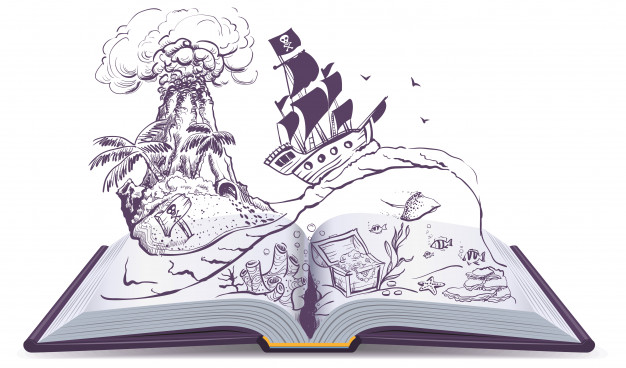
More is to be addressed regarding this phenomenon of amplifying the literary experience. The activity is only one of the numerous way, prescribed. And, yet, it continues to build beauty and wonder in the classroom. Even one of the many solutions of transforming class dimensions. Until next time, let’s continue to immerse in one way of shifting holistic well-being in the literary world for children in the Kindergarten and Pre-Kindergarten stages. A way in allowing healing, joy, magical knowledge, fun, and abundance to enter into classroom spaces.
